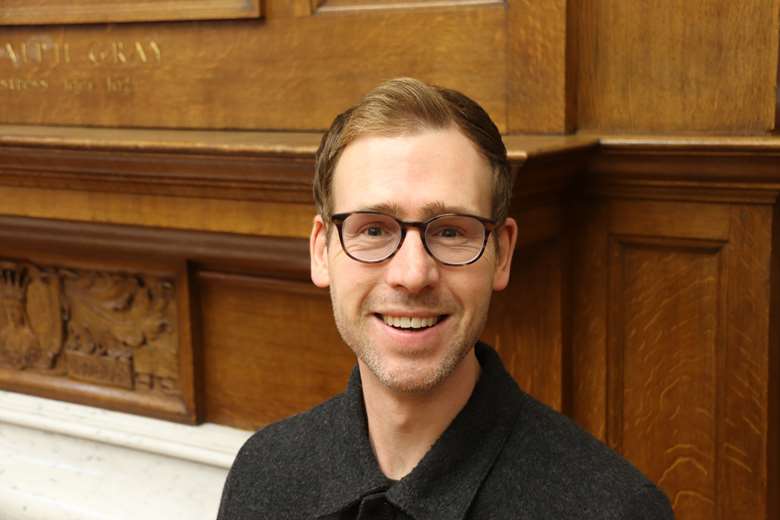Q&A: Edwin Pitt Mansfield
Hattie Fisk
Thursday, June 1, 2023
When he’s not leading singing lessons, running choirs or working as a TCL examiner, Edwin Pitt Mansfield volunteers as chair of the Association of Teachers of Singing (AOTOS). Hattie Fisk finds out what advice he has for bringing singing into your classroom.

Janet Shell
HF: Congratulations on being appointed chair of AOTOS last July. How did you find yourself in this role?
EPM: It can be a very lonely world as a music teacher, and when I first worked as one I wanted to gain some support and work with fellow singing teachers to share ideas, so I joined AOTOS. I really enjoyed the community feel and the various events they put on. I found it so useful that I got more and more involved, and I was asked eventually to apply for the Southeast area rep role. I did this for three years and was then put forward as chair in 2022, and will stay in post until 2024.
HF: You must enjoy being part of the organisation then!
EPM: I really do. The council is wonderful, and, apart from two paid freelancers, we are all volunteers who are highly dedicated. It sounds cheesy, but I am really lucky to have such a great team around me. We are an organisation by members, for members.
HF: Who is AOTOS for and what does it offer its members?
EPM: As the UK’s only singing-teachers’ association, we run a variety of brilliant online and in-person CPD events throughout the year. The membership is very good value at £60 per year, and we offer reduced rates for students because we really want to be accessible for everyone. It is open to all to join – you don’t have to have a qualification. We are very diverse in our membership base: we have teachers who are hugely experienced and have been doing this for years, but also primary school coordinators who are less experienced with using or teaching singing in the classroom. We will welcome and support everyone. We are rebuilding our training course at the moment, but we do offer an ‘essentials’ course online.
HF: What are your tips for leading singing workshops?
EPM: Trying not to put people on the spot is an important thing, because singing can be very personal; in a sense, it is you. It is not like an instrument where if you play the wrong note, it is the wrong note – with singing, if someone says they do not like the sound, then it is almost criticising the person. One needs to be aware of this when leading singing workshops, and be supportive. It is also really important to keep workshops fun and energetic. You have to find material that can include everyone in the same workshop, because often singing workshops are social melting pots of everyone coming together.
HF: How do you think we can encourage more young people to take up singing?
EPM: On a broad music education level, trying to normalise singing as much as possible in school is really important. It is great that the new model music curriculum has a big emphasis on singing, but actually bringing that culture into the whole school is a great way to get more young people involved. I know that sounds idealistic, and I am aware of the constraints teachers face, but I think it is a really useful tool.
In terms of curriculum, I think that a broad spectrum works well. With the groups I run, we do jazz, pop, musical theatre, classical and more, so that there is something for everyone. If you do a bit of everything, then something will stick. If you are just doing a pop choir, there might be some kids who really want to do classical etc. Having a wide diet is vital.
HF: Do you have any tips for teachers who lack experience in using singing in the classroom?
EPM: I would say be confident and start simple. It is amazing what you can do with just an easy round. There is so much good material out there, but an easy round is a good place to start. If the kids are finding this difficult, you can do it as one part; if they are asking for something more challenging, you can split it up into loads of parts, while keeping it fun and physical. Things like body percussion work well to help loosen people up and get students having fun; by keeping it enjoyable you can ensure all sides of the room are engaged. These are methods to get some of the less confident singers and more confident movers doing something new, in a roundabout way. If you try and make singing part of every lesson, even in a small way, it helps lessen the fear students may have around performing.

